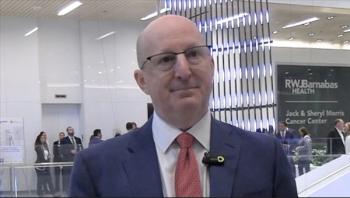
The Jack & Sheryl Morris Cancer Center offers “state-of-the-art” surgical suites and advanced radiation technology, says Andrew M. Evens, DO, MBA, MSc.

Your AI-Trained Oncology Knowledge Connection!


The Jack & Sheryl Morris Cancer Center offers “state-of-the-art” surgical suites and advanced radiation technology, says Andrew M. Evens, DO, MBA, MSc.
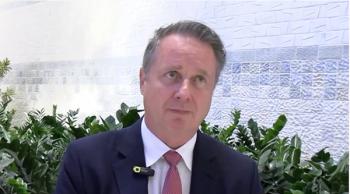
The pediatric care wing of the Jack & Sheryl Morris Cancer Center is intended to accommodate the physical and emotional needs of younger patients with cancer.

Andrew M. Evens, DO, MBA, MSc, discusses the importance of meeting the emotional and physical needs of cancer survivors to help them lead fruitful lives.
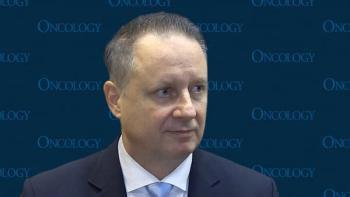
Optimal cancer survivorship care may entail collaboration between a treating oncologist and a cancer survivorship expert.

Survivors of cancer may experience an increased risk of having organ, cardiac, or lung disease following prior anti-cancer therapy.

A leader from the adolescent and young adult lymphoma space discusses how collaboration between adult and pediatric oncologists has transformed the field.

Establishment of an AYA Lymphoma Consortium has facilitated a process to better understand and address gaps in knowledge for this patient group.

Adult and pediatric oncology collaboration in assessing nivolumab in advanced Hodgkin lymphoma facilitated the phase 3 SWOG S1826 findings.

Treatment paradigms differ between adult and pediatric oncologists when treating young adults with lymphoma.

This management guide covers the risk factors, screening, diagnosis, staging, and treatment of non-Hodgkin lymphoma.

Andrew Evens, DO, MSc, deputy director for clinical and translational research and medical director of the Clinical Research Office at the UMass Memorial Health Care Cancer Center of Excellence, talks about his research on lymphoma during pregnancy.

In this issue of ONCOLOGY, Jacobson and LaCasce present a complete review of the risk factors, prognosis, and treatment of post-transplantation lymphoproliferative disorders (PTLD) following hematopoietic stem cell transplant (SCT) and solid organ transplant (SOT). They aptly describe the continued relatively high rate of PTLD in transplant recipients; approximately 2% to 3% of all SOT subjects will ultimately develop this potentially fatal disorder, a rate that is more than 30 times higher than that in the general population.[1] Furthermore, lymphoproliferative diseases represent approximately 20% of all malignancies in SOT subjects, compared with ~5% in the general population.[2,3]

Anaplastic large cell lymphoma (ALCL) is a biologic and clinically heterogenous subtype of T-cell lymphoma. Clinically, ALCL may present as localized (primary) cutaneous disease or widespread systemic disease. These two forms of ALCL are distinct entities with different clinical and biologic features. Both types share similar histology, however, with cohesive sheets of large lymphoid cells expressing the Ki-1 (CD30) molecule. Primary cutaneous ALCL (C-ALCL) is part of the spectrum of CD30+ lymphoproliferative diseases of the skin including lymphomatoid papulosis. Using conservative measures, 5-year disease-free survival rates are>90%. The systemic ALCL type is an aggressive lymphoma that may secondarily involve the skin, in addition to other extranodal sites. Further, systemic ALCL may be divided based on the expression of anaplastic lymphoma kinase (ALK) protein, which is activated most frequently through the nonrandom t(2;5) chromosome translocation, causing the fusion of the nucleophosmin (NPM) gene located at 5q35 to 2p23 encoding the receptor tyrosine kinase ALK. Systemic ALK+ ALCLs have improved prognosis compared with ALK-negative ALCL, although both subtypes warrant treatment with polychemotherapy. Allogeneic and, to a lesser extent, autologous stem cell transplantation play a role in relapsed disease, while the benefit of upfront transplant is not clearly defined. Treatment options for relapsed patients include agents such as pralatrexate (Folotyn) and vinblastine. In addition, a multitude of novel therapeutics are being studied, including anti-CD30 antibodies, histone deacetylase inhibitors, immunomodulatory drugs, proteasome inhibitors, and inhibitors of ALK and its downstream signaling pathways. Continued clinical trial involvement by oncologists and patients is imperative to improve the outcomes for this malignancy.

The incidence rates of non-Hodgkin lymphoma (NHL) in the United States have almost doubled between 1970 and 1990, representing one of the largest increases of any cancer. Although the overall incidence rates of NHL began to stabilize in the late 1990s, the temporal trends varied by histologic subtype. Some of this increase may be artifactual, resulting from improved diagnostic techniques and access to medical care, or directly related to the development of NHL in 25- to 54-year-old men with human immunodeficiency virus (HIV) infection. However, additional factors must be responsible for this unexpected increase in frequency of NHL that has been observed throughout the United States.

Hodgkin lymphoma (HL) is one of the most curable malignancies in adults. However, survival rates for elderly patients with HL (often defined as ≥ 60 years of age) are inferior to those achieved by younger populations.

Between 1950 and 1999, the incidence of non-Hodgkin's lymphoma (NHL)rose by 90% in the United States, representing one of the largest increases ofany cancer. Some of this increase may be artifactual, resulting from improveddiagnostic techniques and access to medical care, or directly related to thedevelopment of NHL in 25- to 54-year-old men with human immunodeficiencyvirus (HIV) infection. However, additional factors must be responsiblefor this unexpected increase in frequency of NHL that has been observedthroughout the United States.

Yttrium-90 (Y-90) ibritumomabtiuxetan (Zevalin) radioimmunotherapywas approvedby the US Food and DrugAdministration (FDA) in February2002 and tositumomab/iodine-131(I-131) tositumomab (Bexxar) was approvedby the FDA in June 2003 forthe treatment of patients with relapsedor refractory low-grade, follicular, orCD20-positive transformed B-cellnon-Hodgkin’s lymphoma (NHL),and rituximab (Rituxan)-refractoryfollicular NHL. In this excellentreview, Drs. Ghobrial and Witzigdescribe the rationale for radioimmunotherapyand the relevant clinicaltrials that formed the basis forFDA approval.
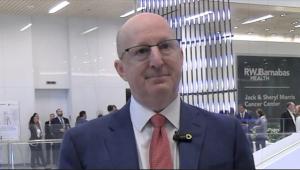
Published: May 25th 2025 | Updated:
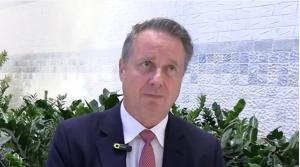
Published: May 20th 2025 | Updated:

Published: March 12th 2010 | Updated:

Published: December 12th 2011 | Updated:

Published: November 15th 2008 | Updated:

Published: June 15th 2010 | Updated: